In image editing it can be frustrating when the software doesn't react as quickly as you'd like. Especially when working with Lightroom Classic CC, where large amounts of RAW files are often edited, optimal performance is crucial. In this tutorial, I'll show you how to improve the speed and efficiency of Lightroom. Whether you're using a powerful iMac or an older notebook, the following tips will help you use Lightroom faster and more effectively.
Key Insights
- The catalog and preview files should be stored on the fastest disk, ideally on an SSD.
- Optimizing standard and 1:1 previews improves image display and reduces loading times.
- Enable GPU support to accelerate image editing.
- Increase the RAW cache to enhance workflow efficiency.
- Minimize background processes to improve Lightroom's overall performance.
Step-by-Step Guide to Performance Optimization in Lightroom
1. Use the right storage structure for your catalog
To increase Lightroom's performance, it's important to store the catalog and preview files on the fastest available disk. If possible, use an internal SSD to store both types of files. This ensures that Lightroom works much faster when accessing the catalog and preview files.

2. Create appropriate previews
An effective method to improve image loading speed in Lightroom is to create standard previews. These are set in "Catalog Settings" under "File Handling." You can set the size of the previews to be larger than your monitor's resolution. In many cases, a size of 550 x 210 pixels is sufficient for quick viewing.
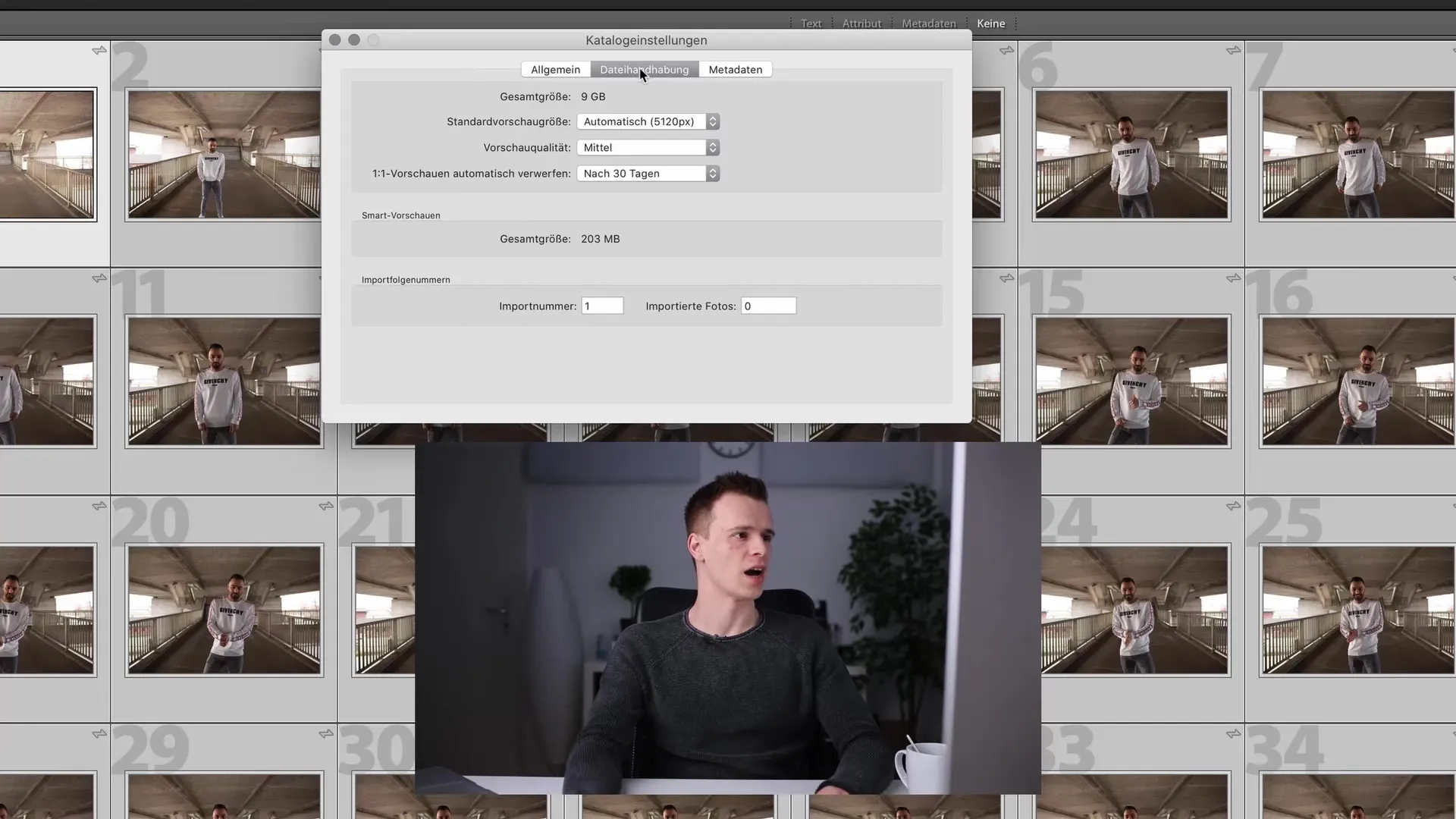
For optimized performance, I recommend setting the preview quality to "Medium." This way, the previews are created faster without significant loss of quality. Make sure not to create too many 1:1 previews, as they consume a lot of storage space and can affect performance.
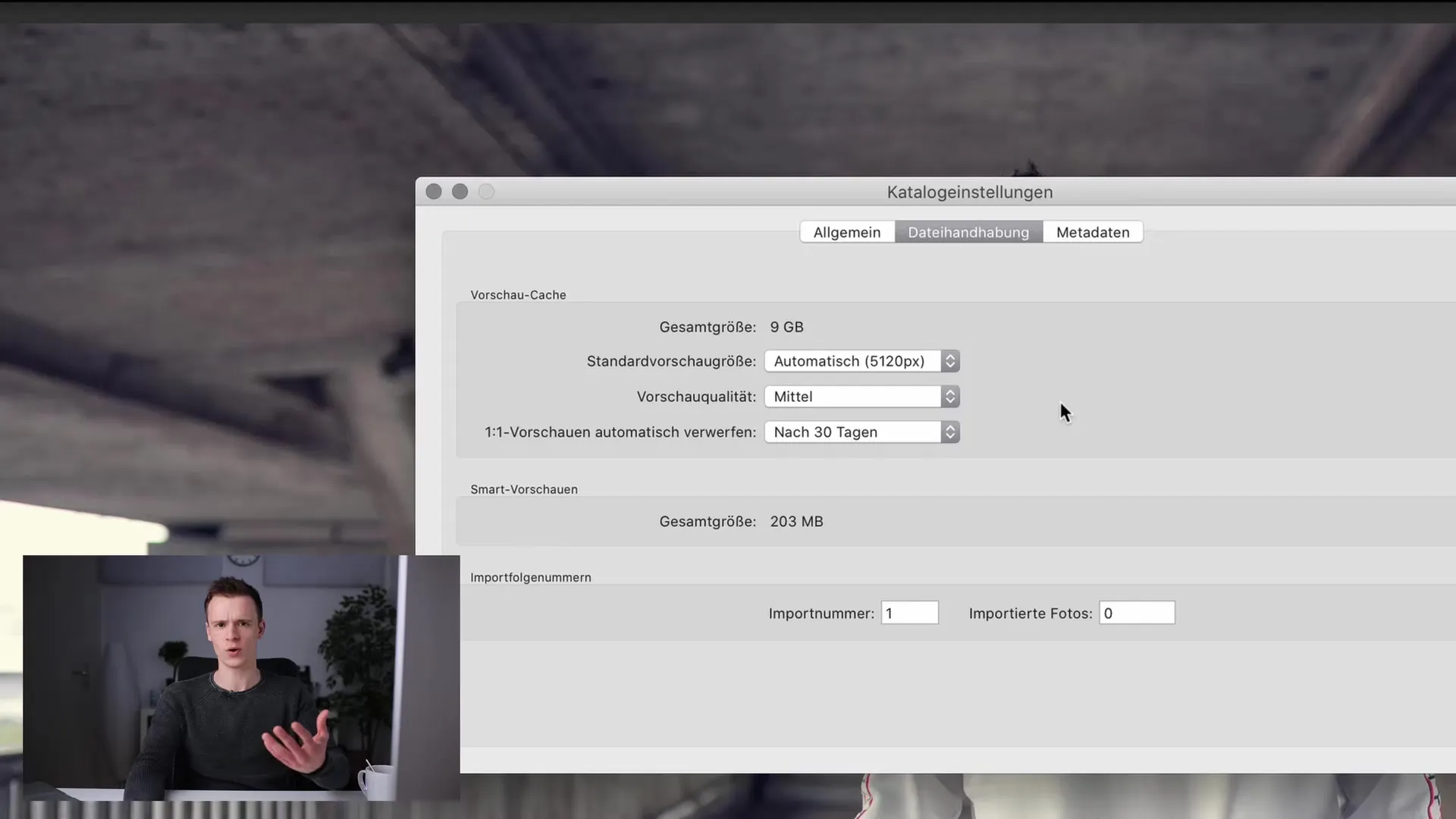
3. Optimize GPU settings
Using the GPU (Graphics Processing Unit) can help speed up image editing in Lightroom, especially for computationally intensive tasks like local adjustments. You can find the option for GPU usage under Preferences. Make sure it's activated to support accelerated volumetric rendering.
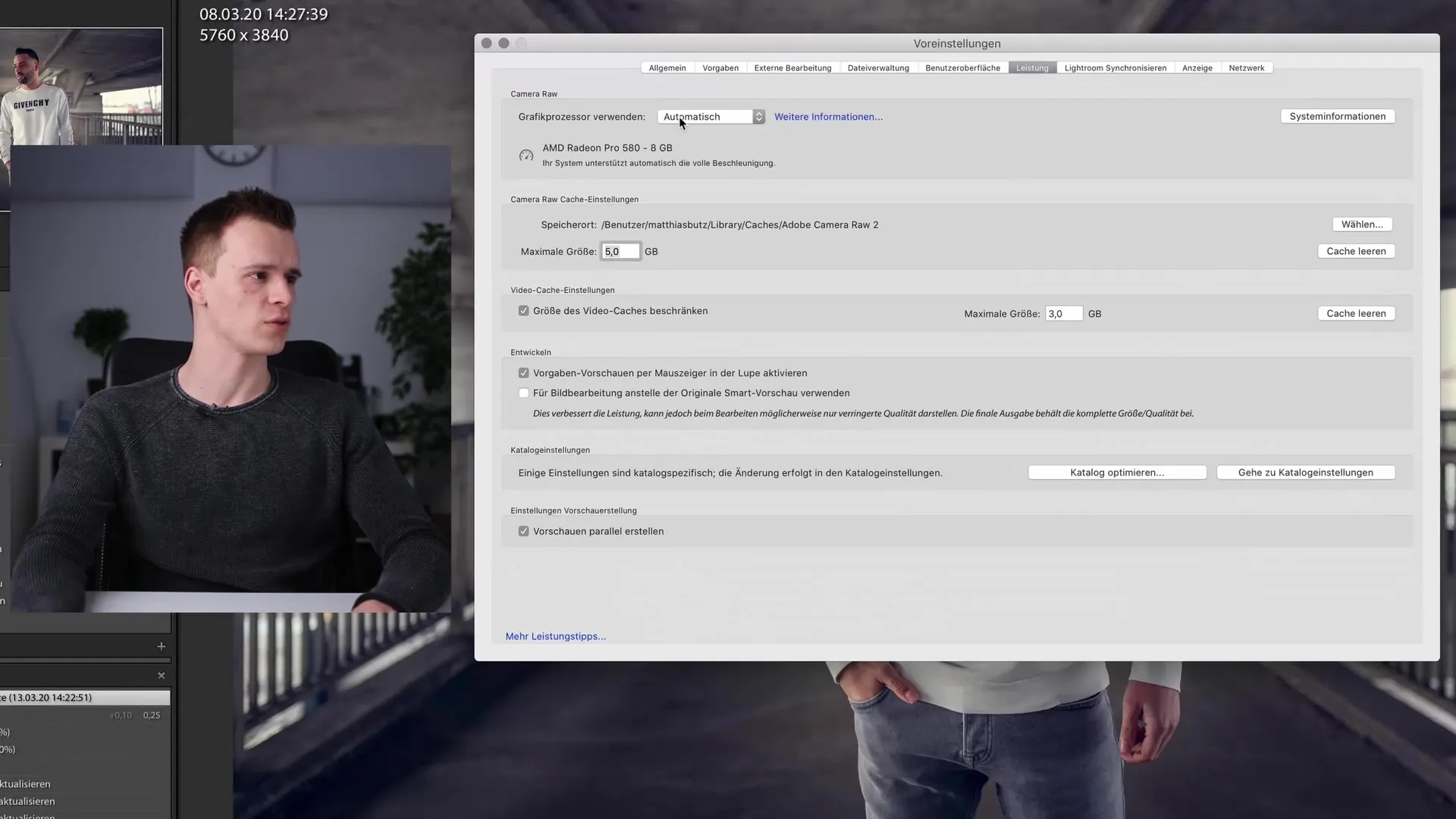
4. Increase RAW cache
To improve processing speed, you should increase the RAW cache. By default, this is set to 1 GB. By adjusting it to 10 GB or more, you give Lightroom more room to have sufficient cache memory. This helps increase speed, especially when editing images frequently.
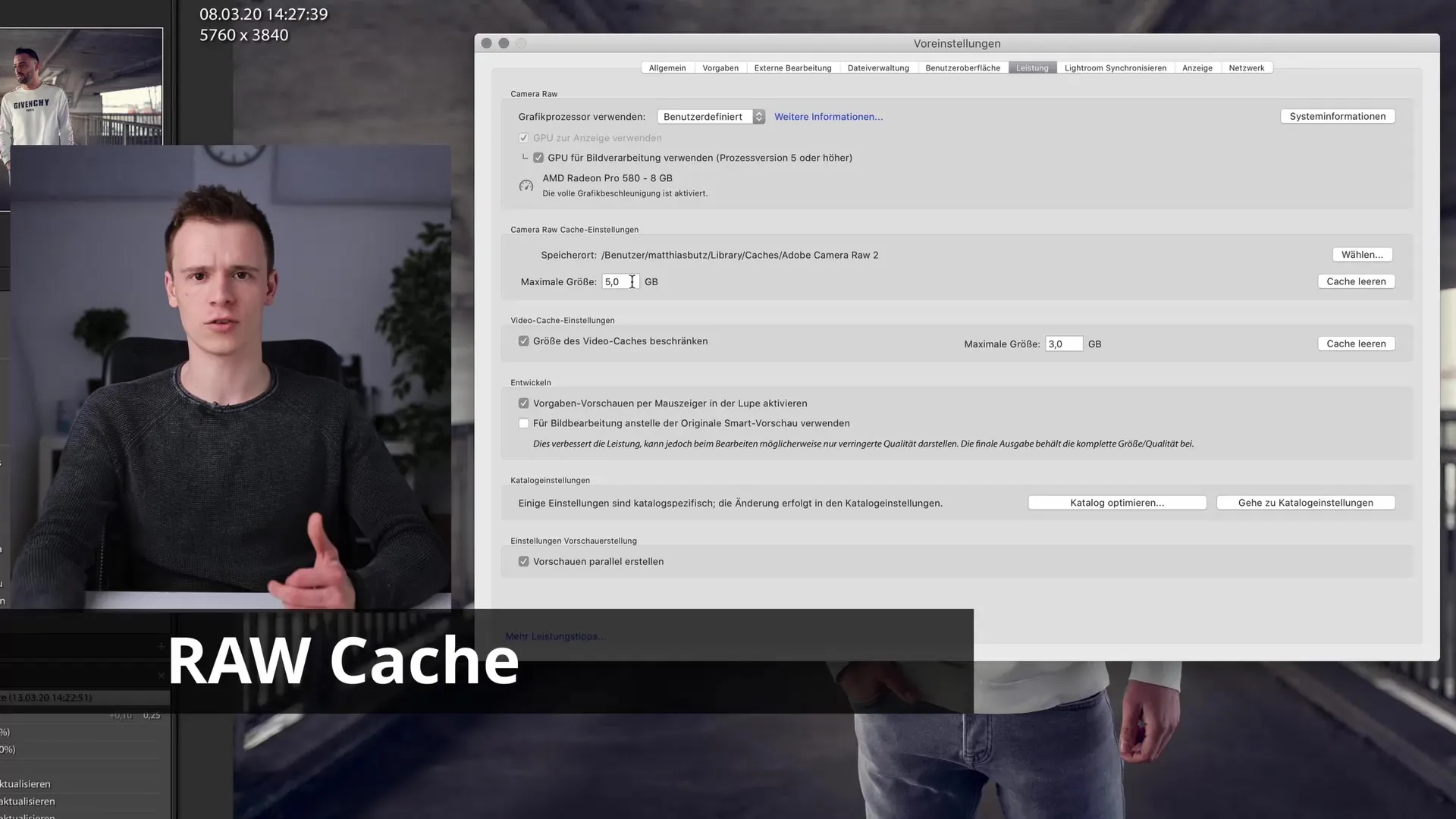
5. Maintain enough free storage space
Ensure there is always at least 20 GB of free storage space available on the SSD you're working on. Inadequate storage space can significantly restrict Lightroom's performance as it requires additional capacity for image editing and caching.
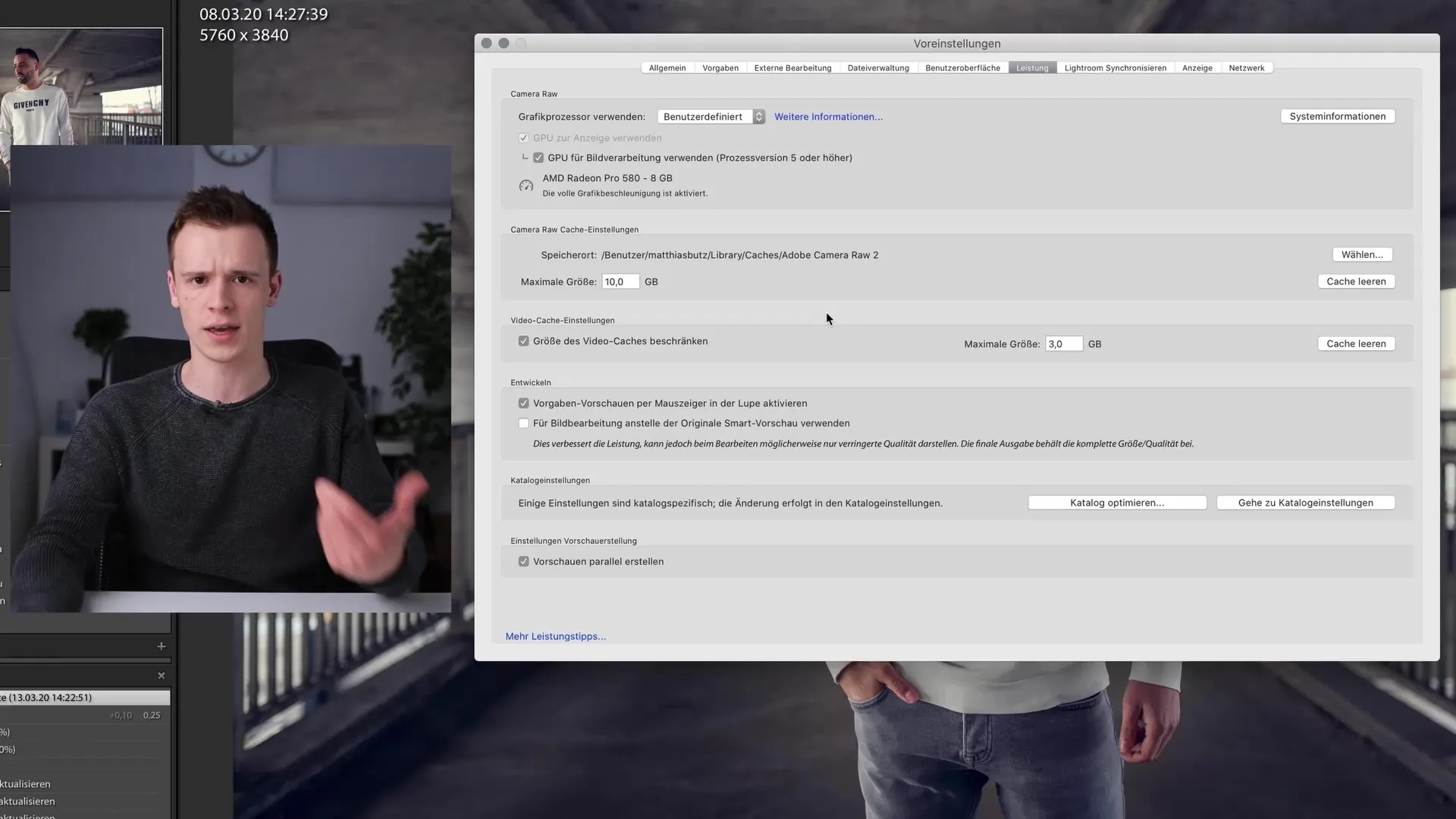
6. Disable unnecessary background applications
Background applications, especially synchronization services like Dropbox, can significantly impact Lightroom's performance. Close all programs that are not necessary and avoid using a second monitor to minimize strain on your system resources.

7. Keep face recognition disabled
If you don't regularly use face recognition in Lightroom, it's advisable to disable this feature. It consumes resources and can decrease speed when importing new images as it constantly searches for faces.

8. Optimize the storage of metadata
In the catalog settings, you can choose whether metadata should be automatically saved in XMP files. If this decreases your performance, it is better to prefer manual saving and only enable XMPs when you really need them.
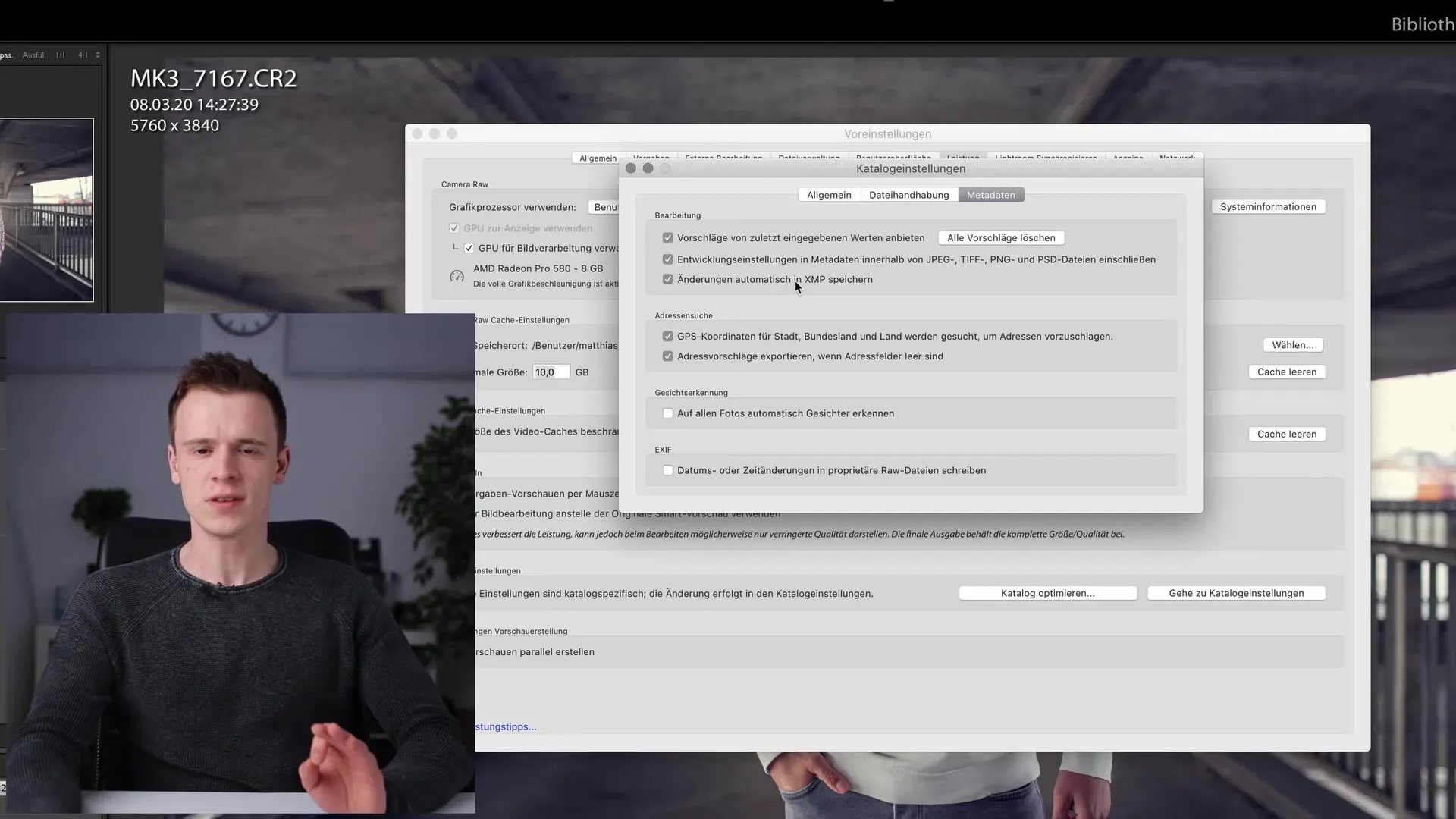
9. Use DNG formats
DNG offers advantages in processing speed and storage space. Since it was developed by Adobe, Lightroom can process DNG files more efficiently. Additionally, the DNG format allows for lossless compression and storing all editing steps in a single file.
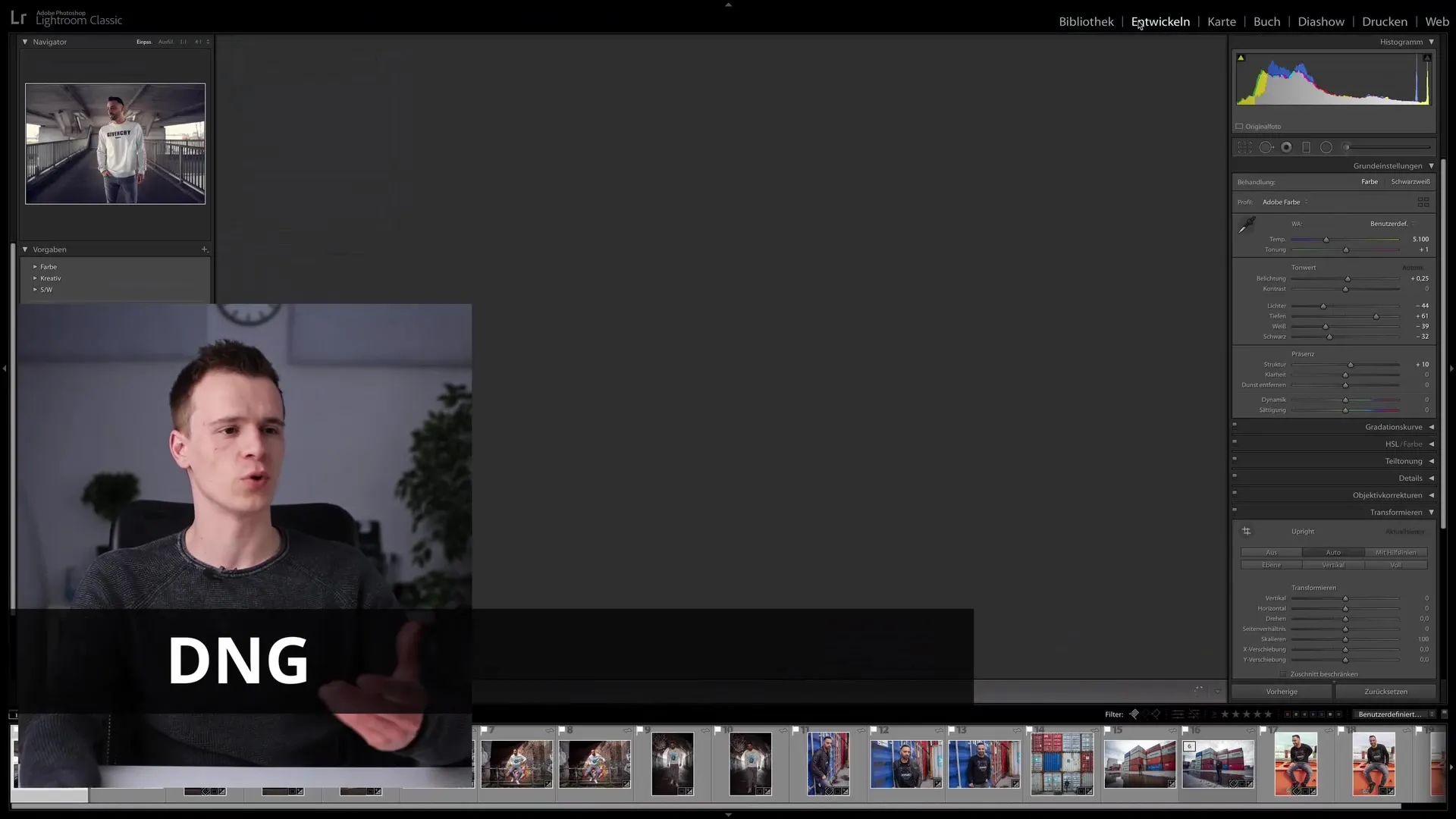
Summary
By following these steps, you can significantly increase the performance of Lightroom Classic CC. Invisible background processes and suboptimal memory configurations can often be the main cause of slow processing. Experiment with these tips to find out which combination works best for your specific hardware and workflow. Have fun editing your photos in Lightroom!
Frequently Asked Questions
How can I improve performance in Lightroom?By adjusting the storage locations, preview settings, and GPU usage, you can optimize performance.
Should I use DNG instead of RAW?Yes, DNG files offer benefits such as faster processing and lossless compression.
How much RAM should I have in my computer for Lightroom?At least 8 GB of RAM is recommended, 16 GB or more is ideal for the best performance.


